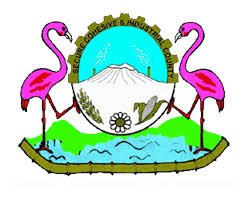The Menstruation Cycle
The Menstruation Cycle. What is Menstruation Cycle.
Menstruation can be defined as the monthly shedding of the lining of uterus that begins when women get their period or menstruate. The menstrual cycle is a complex, natural process that occurs in the female reproductive system. It involves a series of hormonal changes and physical events that prepare the body for pregnancy each month. Here’s a breakdown of the menstrual cycle:
Understanding Menstrual period
Typically, menstrual period starts between age 11 and 14 – menarche – when periods first start during puberty and continue until – menopause – when periods stop permanently at about age 51. An average menstrual cycle lasts 28 days. The cycle starts with the first day of the last period and ends with the first day of the next menstrual period. It is not always perfectly predictable and the length may vary from cycle to cycle. It is driven by hormones which are secreted by the pituitary gland and the ovaries.
Some people have fairly predictable periods, but ovulation may not happen on the exact same day every cycle making it hard to predict.
Phases of the Menstrual period
The menstrual cycle has four phases:
- The menses phase
- Follicular (before release of the egg)
- Ovulatory (egg release)
- Luteal (after egg release)
The menses phase typically lasts from day one to day five. Some of the activities that take place at this phase is when the lining of the uterus sheds through the vagina if pregnancy hasn’t occurred. Most people bleed for three to five days.
Follicular (before release of the egg). His phase typically takes place from days six to 14. At this this phase, the level of the hormone estrogen rises, which causes the lining of your uterus (the endometrium) to grow and thicken
Ovulation. It is at this phase when an ovary releases an egg. It occurs roughly at about day 14 in a 28-day menstrual cycle. There is sudden increase luteinizing hormone (LH) — a hormone that causes your ovary to release its egg.
Luteal (after egg release). This phase lasts from about day 15 to day 28. The egg has already been released so it leaves the ovary and travels through your fallopian tubes to your uterus. The level of the hormone progesterone rises to help prepare your uterine lining for pregnancy. If the egg becomes fertilized by sperm and attaches itself to your uterine wall (implantation), you become pregnant. If pregnancy doesn’t occur, estrogen and progesterone levels drop and the thick lining of your uterus sheds during your period.
The Menstruation Cycle
Throughout the menstrual cycle, the levels of estrogen and progesterone fluctuate, orchestrating the various phases and preparing the body for potential pregnancy. If fertilization and implantation of a fertilized egg occur, the menstrual cycle is interrupted, and pregnancy begins. Otherwise, the cycle continues.
It’s important to note that the length of the menstrual cycle and the duration of each phase can vary from woman to woman and can be influenced by factors such as stress, illness, and hormonal imbalances. Keeping track of the menstrual cycle can be helpful for understanding fertility patterns and overall reproductive health.














